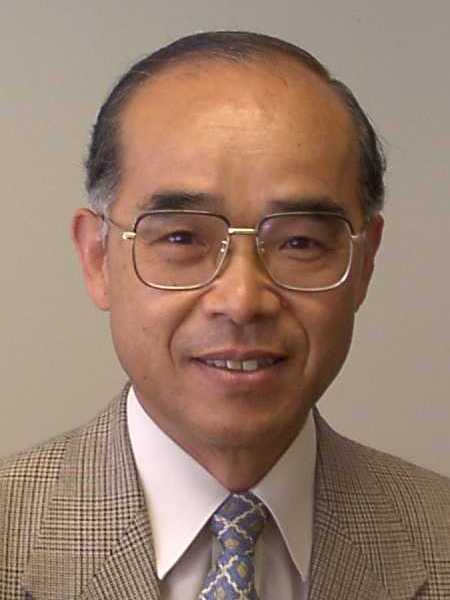|
 |
 |
|

Technical
Seminar
Distinguished Lecturer Series |
 |
 |
|
|
|
Ultra-low Voltage Nanoscale Embedded RAMs |
|
|
DATE/TIME
Thursday, June 15, 2006
(4:30pm to 6:00pm)
|
|
PLACE
Bldg. 1 Auditorium (Avago
Technologies, Fort Collins, CO, formerly Agilent Technologies) |
|
DIRECTIONS
|
|
Non-Avago
Attendees: Please arrive punctually at 4:15pm as you will
need to be escorted to the seminar
room. RSVP to
bob.barnes@avagotech.com
to expedite sign-in and to help us with a headcount estimate for
food/drinks. |
|
From I-25, take Harmony Road Exit (Exit
265) westbound, and enter Agilent/HP campus on right. Avago/HP/Intel
campus is on the NE corner of Harmony Road and Ziegler Road.
Proceed to Bldg. 1 Lobby to sign-in and meet host for escort to
Auditorium. |
|
COST
Free. As always, food &
drinks will be provided. |
|
|
ABSTRACT
|
|
RAM cells and peripheral logic
circuits of low-voltage nano-scale embedded RAMs are described. In
particular, essential differences between the one-transistor
one-capacitor (1-T) DRAM cell and the six-transistor (6-T) SRAM cell are
clarified in terms of low-voltage operation. In addition,
state-of-the-art circuits and devices to reduce subthreshold currents
and variations in speed and leakage caused by PVT (process, voltage, and
temperature) variations are described in detail. |
|
In this
talk, first, general trends in low-voltage RAMs are explained.
Second, challenges to low-voltage RAM cells and peripheral logic
circuits are clarified. Third, RAM cell issues are discussed.
Here, the low-voltage limitation of the 1-T and 6-T cells is
investigated in terms of signal charge, signal voltage, noise, and cell
size. Suppression of the ever-increasing threshold-voltage (VT)
variation with device scaling, which seriously degrades the sense margin
of the 1-T cell and the voltage margin of the 6-T cell, the ECC circuit
to cope with the ever-increasing soft-error rate and VT
variation, and power-supply controls of the 6-T cell are also explained.
Fourth, peripheral circuits are discussed with respect to leakage
reduction and compensation for speed variations caused by VT
variations. Fully-depleted-SOI devices and circuits to reduce the
variations are also explained. Finally, two approaches are
envisioned, which are high-VDD bulk-CMOS
for low-cost RAMs and low-VDD FD-SOI for
high-speed low-power RAMs. |
|
PRESENTATION SLIDES
pdf |
|
REFERENCE |
|
Paper from IEEE International Symposium on
Circuits and Systems (ISCAS-2006) |
|
|
DR. KIYOO
ITOH (Hitachi Central Research Laboratory, Tokyo, Japan)
|
 |
Kiyoo Itoh
received the BS and PhD degrees in
electrical engineering from Tohoku University, Sendai, Japan, in 1963
and 1976 respectively. He is currently a Hitachi Fellow. He
was a Visiting MacKay Lecturer at U.C. Berkeley in 1994, a Visiting
Professor at the University of Waterloo in 1995, and a Consulting
Professor at Stanford University in 2000-2001. He was a Member of
the IEEE Fellow Committee from1999 to 2002, and an elected AdCom Member
of IEEE Solid-State Circuits Society from 2001 to 2003. He is a
Distinguished Lecturer of the IEEE Solid-state Circuits Society.
Since 1972, he has led RAM circuit technology at Hitachi Ltd, being lead
designer of the first prototype for eight generations of Hitachi DRAMs
ranging from 4kb to 64Mb. As early as 1988, he pioneered circuit
inventions and developments to reduce subthreshold current of MOSFETs
even for the active mode, which is highlighted today in low-voltage CMOS
LSI design. |
|
He holds over 370 patents in
Japan and US. He authored three books and three book chapters on
memory designs, and contributed over 130 technical papers and
presentations, many of them invited, in IEEE journals and conference
proceedings. |
|
Dr. Itoh has won many honors. They
include the IEEE Paul Rappaport Award in1984, the Best Paper Award of
ESSCIRC90, the 1993 IEEE Solid-State Circuits Award, and the 2006 IEEE
Jun-ichi Nishizawa Medal. He is an IEEE Fellow. In Japan,
his awards include the National Invention Award in 1989, the
Commendation by the Minister of State for Science and Technology in
1997, and the National Medal of Honor with Purple Ribbon in 2000. |
|
|
|